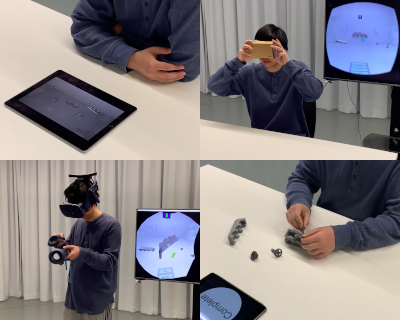Investigating effects of immersion on training transfer in virtual reality
The availability of consumer-facing virtual reality (VR) headsets makes virtual training an attractive alternative to expensive traditional training. There are a variety of consumer VR headsets with a price range from tens to thousand dollars. Each headset delivers virtual environment with different levels of immersion and provides different input modalities.
A lot of previous research has provided evidence of the effectiveness of virtual reality training in different fields, and recent works showed that virtually trained workers perform bimanual assembly tasks equally well as ones trained with conventional formats.
This project aims to extend previous works by specifically investigating how levels of immersion and different interaction methods affect training transfer between virtual and physical tasks. In particular, we are interested in understanding whether the use of 3D-tracked bimanual controllers, which is only available in more expensive VR systems, is necessary or more effective for virtual training of bimanual assembly tasks.

